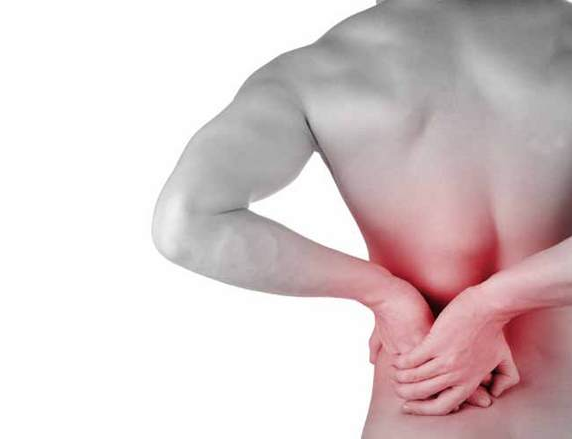Most people get back/neck pain. A lot of people live with it, a lot of people deal with it and stretch it out. Some just accept it and move on. There are a hundred different causes of back pain and its important in the assessment of an individual to figure out exactly why and what is the contributing condition that makes our backs ache.
But to be specific, often you will hear assessments coming back with the terms of Spondolysthesis/Spondylitis/Ankylosing Spondolysthesis. Who is this Spondy and why do they have such power over our backs?
The 'Spondy' family is basically a term that applies to our spine (spondylos- greek, vertebrae). And furthermore - the inflammation of the joints of our spine. In most cases of the 'Spondy' family we are looking at inflammation of the spine. As with any condition there are variations but the 'spondy' family seems to have quite a few members to it. So let's take a look at some of the terms to get you familiar and differentiate exactly what part of the 'spondy' family you may belong to.
Spondylitis
This is a form of inflammation that usually affects one or more of the vertebral bodies. It ilicits pain and stiffness in the spine that is caused by a prominence of a vertebral body. It addresses the generic inflammation of one or more of the cervical segments, often in the cervical and/or lumbar regions of the spine.
Spondylosis
This is somewhat different to just inflammation of the vertebrae. This condition relates to an osteoarthritic condition or degeneration of the joints themselves. It can often be associated with nerve pain and neuropathic pain down along the spine or into the shoulders and arms. This condition usually affects older persons.
Ankylosing Spondylosis
Ankyl refers to crooked. This is a chronic inflammatory disease of the axial skeleton (main body). It particular relates to the site of the soft tissue connections with the body and is often found to interrupt the Sacro-illiac joint in the pelvis. Typical dull chronic pain in the gluteal and lower region of the back is often the symptom with pain worse in the mornings. Exercise helps to alleviate the pain. Limited movement in all three planes (flexion/extension/rotation) can be experienced and there can be some spinal fusing involved which results in restriction of movement and postural adaptions such as kyphosis (hunchback).
Spondylolysis
This is a defect of the vertebral arch where one spinal segment in particular the bony segment between the facet joints on the sides of each spinal segment (pars interarticularis) has detached and there is a separation of the joint. This condition can worsen and involve more than one spinal segment which then results in it being classified as spondylolisthesis. It is common around L5 but can occur in other spinal segments and the thoracic spine.
Spondylolisthesis
Advanced condition of spondylolysis, being forward displacement of the vertebrae common around the lumbar area. Results in a 'waddle' gait, weak gluteal muscles, and is sometimes premeditated by a slip or fracture of the intevertebral bodies. This condition is often closely confused with a 'slipped disc' or rupture of the intevertebral disc.
Looking at the commonality of these various types of conditions, there are some consistent thoughts regarding rehabilitation and treatment. Most conditions advocate a reinforcing and strengthening of the all important 'core' muscles to stabilise the spine and incorporate a supportive band of muscular tension that supports the spine in movement. Looking at more invasive methods, these can include surgery, where parts of the vertebral body are shaved off (as in a laminectomy) to make space for the spinal segment, or release pressure that has built up inside the joint as in the case of spondylosis or spondylitis. But it is important to understand the subtle differences between the types of 'spondy' pathologies in the management of the injury.
The most common question is whether to exercise or not. I usually say yes as movement stimulates articulation through not only the joint space but the associated spinal column. When one articulation is compromised, ensuring a fluid and supple spine means that the other spinal segments are not at risk of becoming restricted due to inactivity. In some surgical instances 'fusing' the vertebrae is encouraged to provide stability for ruptured discs or vertebrae that are at risk of causing other issues such as nerve impingement and occlusion. I believe this situation is to be avoided as much as possible as restricitng spinal movement has rather large repercussions to how the rest of the spine moves. Restricting movement can only lead to reduced mobility and/or compensation in other areas of the spine. This is where exercise comes into play. In some conditions exercise is actually encouraged for the rehabilitation. I believe that keeping the spine supple and flexible is paramount to ensure that it can deal with the various stresses and tasks that are asked of it daily. This is why a desk bound job is such a red flag for me as it encourages a restriction of flexibility and in effect, puts the spine into a 'fixed' position of flexion.
As I recently said to a client, we can do as much exercise and preventative work as possible, but sometimes if we are going to have a disc bulge or a spinal issue it's just going to happen. After all, as we age our intevertebral spaces narrow and become smaller. It's fact and no amount of yoga or fish oil tablets is going to make any impact on this narrowing. Our predispostion to a spondylosis or spondylitis can come from a genetic quotient but then again, this isn't always the case.
When back pain strikes and there is an issue that arises that becomes unusually stubborn or chronic and is not responding to usual treatment, understanding what is going on is particularly important to understand what the best type of approach is to take. This usually comes down to an MRI scan to completely ascertain what is the soft tissue component of an injury. An x-ray or even an ultrasound does not give as complete a picture as an MRI. The reluctance of some practices to prescribe them can be a cost issue and also an access issue as some centres are restricted to how many referrals for MRI they can give. But I do encourage clients to follow this path if the issue is becoming bothersome and not responding to usual treatment. Its a personal preferance. Know the devil you are dealing with.
As a remedial therapist it is also about managing the injury. And providing relief for the person. I may not be the person to deal with disc fractures or spinal segments but I can deal with assisting the space of the spine and the associated movement that comes from that spine. As I mentioned before, the spine relies on all its parts to move freely to complete the complex movements that we ask of it. Working above and below the affected sections is often where you can get a lot of relief for people and even make more space for occluded nerves or impingements.
A case in point, a client had a degenerative disc in her neck, she was experiencing debilitating nerve pain along her arm which got progressively worse over time. One appointment she arrived with agony in her arm. No position was comfortable and the shooting pain and heat in her arm was impossible to allow her any comfort. We worked on several areas and being cautious not to go anywhere near the offending vertebrae. After 40min of trying various combinations of methods, we found firstly a position that provided relative comfort and then it was actually working anteriorly to the disc and the muscles in the anterior of the neck that provided the best benefit.
Sometimes it can take a little more of a 'creative approach' to get relief and this is often when you resist the urge to be too 'anatomical' about it and go with instinct. Working not on the vertebrae itself but on associated soft tissue/muscular units that connected to the area via a pathway, allowed releif to come for the symptom. I was able to do nothing for the injury, but it gave the client some relief from the persistent burning and in her own words - 'allowed her to breathe for the first time in ages'. Sometimes its more about just giving some relief from the symptoms which can make the best immediate comfort and benefit.
Knowing exactly what is going on with the presenting pain an often be the key that allows you to unlock HOW to address it. Getting particular with it also helps to identify what type of movement and relief is going to be of best benefit to a condition. It helps to unlock the particulars of movement patterns that affect and can be addressed to help keep the spine healthy and pain free. Understanding where weakness or inflammation exists helps to avoid movement patterns that may be impacting and compounding the problem, as well as introducing strength and balance in areas that can be activated to help maintain the body and create support where perhaps there is none. The 'spondy' issues are sometimes degnerative and come with age and stress, but others can be more easily managed and approached with intuitive and intelligent assessment. Knowing what your particulars area and how you can address them can make the world of difference



